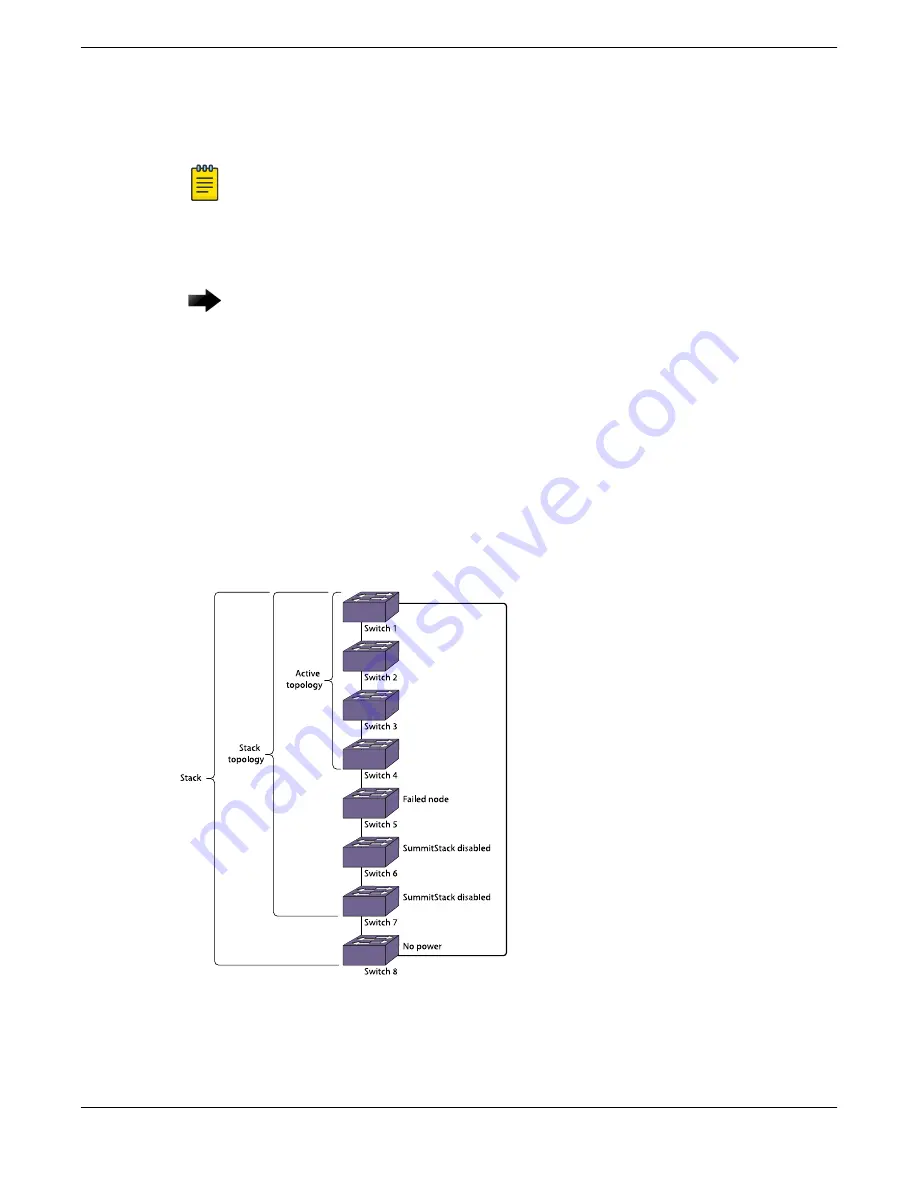
5320 series switches in the stack. Consider these differences when selecting a primary node, selecting a
backup node, and configuring failover operation.
Note
Assign the primary and backup roles to switches from the same series. For example, if the
primary node is a 5520 series switch, the backup node should also be a 5520 series switch.
Similarly, if the primary node is an 5320 series switch, the backup node should also be an
5320 series switch.
Important
The ExtremeSwitching 5320 series switches can also be stacked with themselves, or as the
Primary node with ExtremeSwitching 5420 and 5520 as backups using Alternate stacking.
The 5320 can only act as a Standby node in a 5420 or 5520 Primary configuration. The 5320
cannot act as a Backup node when the Primary node is either a 5420 or 5520.
When easy setup compares two switches that have the same capability, the lower slot number takes
precedence.
Follow the same ranking hierarchy when you plan the physical placement of the switches in the stack.
SummitStack Topologies
presents a graphical representation of a stack and some of the terms that describe stack
conditions.
Figure 19: Example of a Stack, Showing the Active Topology and the Stack Topology
A stack is the collection of all switches, or nodes, that are cabled together to form one virtual switch
using the Switch Engine SummitStack feature.
SummitStack Topologies
Build Stacks
36
ExtremeSwitching 5320 Series Hardware Installation Guide
















































